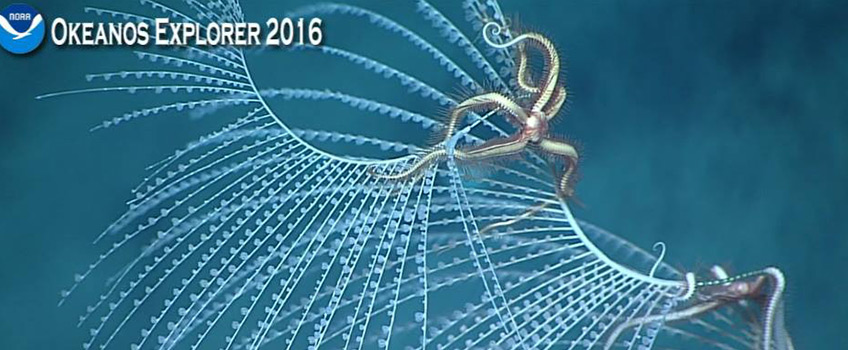Stockton Professor to Serve as Shore-Based Scientist During NOAA’s Marianas Trench Deep Sea Expedition

For Immediate Release
Wednesday, June 15, 2016
Contact: Susan Allen
News and Media Relations
Galloway, NJ 08205
Susan.Allen@stockton.edu
(609) 652-4790
Galloway, NJ - From behind her computer screen, Tara Luke, associate professor of Biology, will dive deep into the dark, frigid waters of the western Pacific Ocean to help identify marine life, possibly some new species. Luke is a shore-based scientist for the National Oceanic and Atmospheric Administration’s (NOAA) exploration of the deepest place on the planet, the Marianas Trench, from the research vessel Okeanos Explorer.
Luke is part of a team of scientists contributing live commentary on the expedition while viewing footage from NOAA’s remotely operated vehicle known as the Deep Discoverer daily for 8-10 hours from Friday, June 17 to Sunday, July 10, beginning at 5 p.m. ET. An online livestream will be available worldwide for anyone to explore the deep sea along with the scientists.
June 17 marks the start of the expedition’s third phase. During phase two, scientists used sonar to map areas of the trench to identify geographic features of interest such as basins, craters and seamounts (underwater mountains) that may attract colonies of sea life. Luke was an on-shore scientist during phase one and said that “the most exciting part was discovering a hydrothermal vent that had never been seen before.”
Chemosynthetic organisms that use chemicals instead of sunlight to create their food inhabit regions with hydrothermal vents.
Previously, Luke participated as a shore-based scientist for a NOAA expedition off the Atlantic Ocean in 2014 that looked at submarine canyons along the New England seamount chain. As a post-doctoral researcher, she dove 2,512 meters below the ocean in Alvin, the U.S. Navy’s manned deep-ocean research submersible that has been operated by Woods Hole Oceanographic Institution for more than half a century.
“I loved being able to go out to sea to see these places,” she said, and with NOAA’s marine technology she is able to continue exploring these places from Stockton University.
Locally, Luke studies artificial reefs that attract colonies of coral, mussels and fish such as tautog and sea bass. She looks at the genetic diversity of corals and microorganisms to predict their ability to withstand change. “Knowing what’s out there and being able to identify species helps us document biodiversity,” she explained.
View photos on Flickr.


